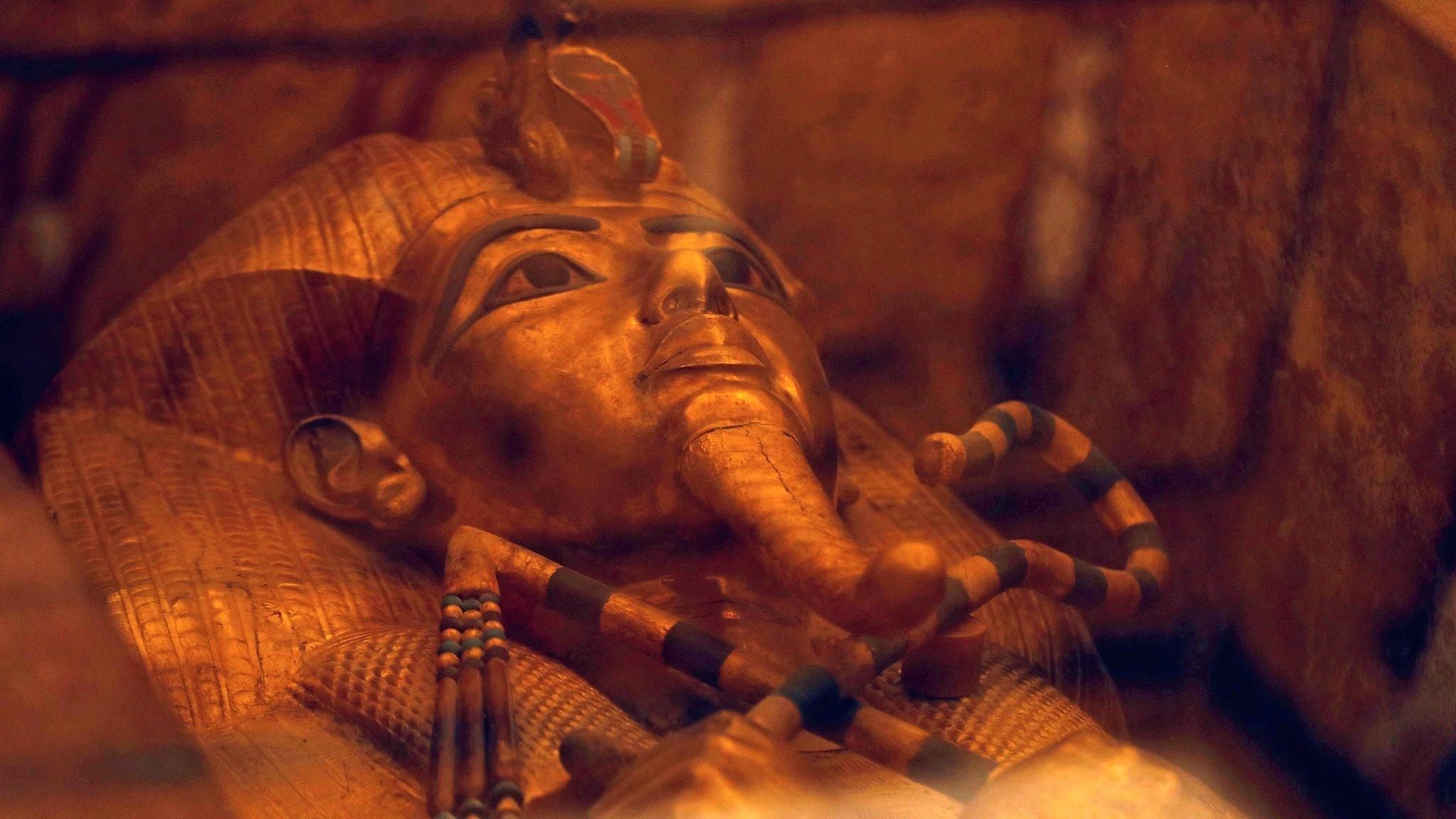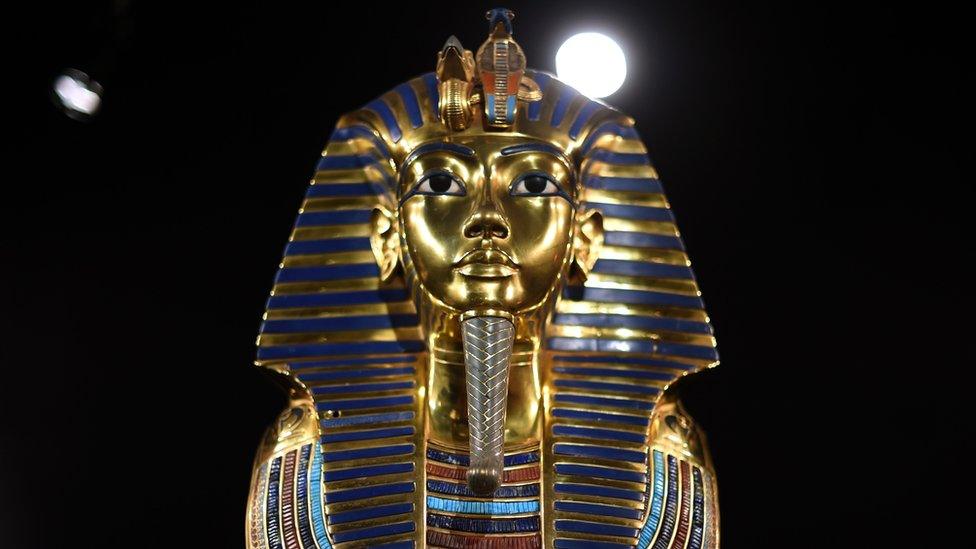Tutankhamun: Bust Egypt says was 'stolen' sells for £4.7m
- Published

Egypt's government has called for the auction to be cancelled
A 3,000-year-old Tutankhamun bust that Egypt claims was stolen has fetched £4.7m ($6m) at auction.
Egypt earlier called on auction house Christie's to cancel the sale of the relic depicting ancient boy-king Tutankhamun.
The country's foreign ministry says that the bust was probably stolen from an Egyptian temple during the 1970s.
Christie's says Egypt has not expressed concern about the bust in the past, despite it being exhibited publicly.
The brown quartzite, 28cm (11in) relic comes from a private collection of ancient art that Christie's last sold for £3m in 2016.
In a statement, Christie's said: "The object is not, and has not been, the subject of an investigation." The auction house said it would never auction an object over which there were legitimate concerns.
Christie's also published a chronology of the relic's owners for the past 50 years. The bust is understood to have been acquired from German aristocrat Prinz Wilhelm von Thurn between 1973 and 1974.
The auction house also said that the bust's existence had been known for a considerable time and it had been on display for a number of years.
Egypt's former antiquities minister Zahi Hawass told AFP news agency: "We think it left Egypt after 1970 because in that time other artefacts were stolen from Karnak Temple."
Egypt introduced laws in 1983 banning the removal of artefacts from the country.
Tutankhamun died over 3,000 years ago aged 19. His remains were found in 1922.
- Published31 January 2019

- Published28 November 2015
